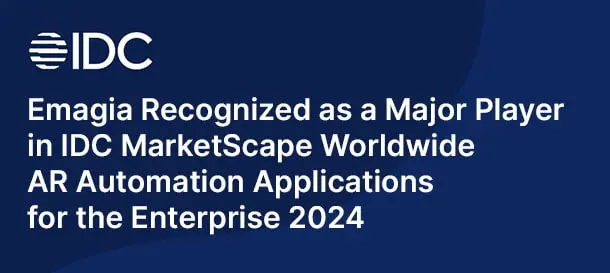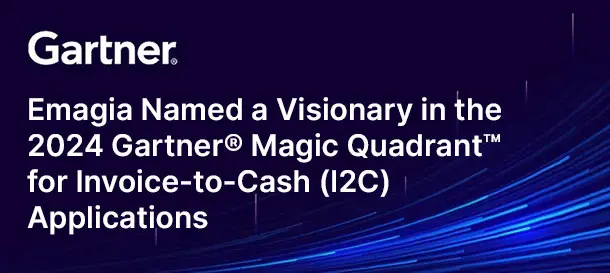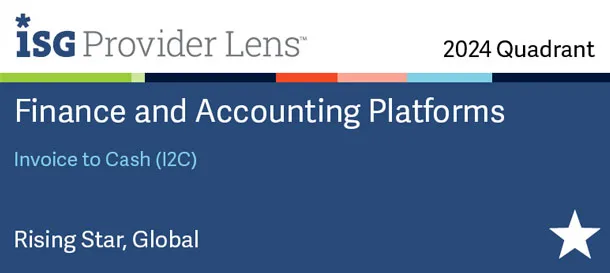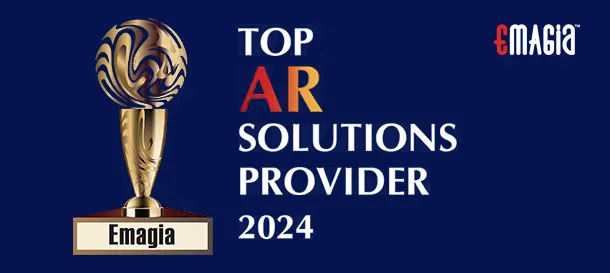Introduction to Automating Billing, Invoicing, and Payment Processing
How to automate billing, invoicing, and payment processing is a key concern for modern finance teams. Businesses aiming to improve efficiency, reduce errors, and speed up cash flow cycles are turning to automation solutions. Leveraging automated billing and invoicing enables companies to streamline operations and ensure accurate, timely payments. This process covers e-invoicing, error reduction, and faster payment cycles, providing a robust solution for accounts receivable and payables.
Understanding Automated Billing and Invoicing
Automated billing and invoicing transform traditional finance operations by eliminating manual entry, reducing errors, and enhancing transparency. With billing automation software, organizations can generate accurate invoices, send them digitally, and track payments in real-time. The integration of invoice automation tools helps businesses handle recurring billing, compliance, and multi-currency transactions with ease.
Benefits of Billing Automation Software
- Reduction in manual data entry errors
- Improved invoice processing speed
- Better compliance with tax regulations
- Enhanced cash flow visibility
- Integration with ERP and CRM systems
AI-Powered Invoice Processing
AI-powered invoice processing is a game-changer in finance operations. Using machine learning, companies can automatically read, validate, and process invoices. This significantly reduces time spent on manual tasks while improving accuracy. AI can also detect anomalies, helping organizations prevent fraud and reduce payment disputes.
Key Components of AI-Powered Invoice Processing
- Data Extraction with OCR: Optical Character Recognition (OCR) enables automated reading of invoice data.
- Automated Approval Workflows: Routing invoices for approval without manual intervention.
- Payment Reminders Automation: Ensuring timely payment collections and reducing overdue invoices.
- Integration with Payment Gateways: Seamless payment processing within existing finance systems.
E-Invoicing and Compliance in Payment Processing
E-invoicing is transforming how businesses handle billing and payment workflows. By adopting e-invoicing GST-compliant solutions, companies ensure accuracy and legal compliance while facilitating faster payments. Digital billing solutions also allow organizations to streamline vendor/supplier interactions and improve audit capabilities.
Advantages of E-Invoicing
- Compliance with tax laws and regulations
- Faster invoice processing and payment cycles
- Reduced risk of errors and disputes
- Automated reconciliation and reporting
Reducing Errors in Billing and Payment Processing
Error reduction in billing is crucial for improving efficiency and avoiding payment delays. Automated systems minimize human errors in invoice creation, payment matching, and reconciliation. Tools like automated reconciliation and predictive analytics ensure high accuracy, even in complex billing scenarios.
Methods to Reduce Errors in Billing Processes
- Implement AI-powered invoice verification
- Use automated approval workflows
- Integrate ERP and CRM systems
- Enable real-time payment tracking
Faster Payment Cycles through Automation
Automation shortens payment cycles by reducing the time it takes to generate invoices, route them for approval, and process payments. Businesses using payment processing automation and invoice-to-cash automation are able to improve cash flow, reduce Days Sales Outstanding (DSO), and enhance customer satisfaction.
Technologies that Enable Faster Payment Cycles
- Recurring billing automation
- Automated payment matching
- Dynamic payment scheduling
- Real-time payment tracking dashboards
ERP Integration for Seamless Billing and Payment Processing
Integrating ERP systems with billing and invoicing automation allows finance teams to have a unified view of customer accounts, invoices, and payments. This ensures better accuracy, faster approval workflows, and efficient dispute resolution.
Key ERP Integration Benefits
- Centralized financial data management
- Automated payment reminders
- Multi-currency billing automation
- Seamless vendor/supplier portal integration
How Emagia Revolutionizes Billing, Invoicing, and Payment Processing
Emagia offers cutting-edge billing and payment automation solutions. By integrating AI-powered invoice processing, automated approval workflows, and real-time payment tracking, Emagia helps businesses streamline their billing cycles, reduce errors, and improve cash flow. Their cloud-based platform ensures compliance and offers seamless ERP integration for a truly automated accounts receivable process.
Benefits of Choosing Emagia
- Reduction of manual work through intelligent automation
- Faster invoice processing and payment cycles
- Compliance with global and local tax regulations
- Real-time dashboards for better decision making
FAQs — How to Automate Billing, Invoicing, and Payment Processing
What is automated billing and invoicing?
Automated billing and invoicing is the process of using software to automatically generate invoices, route them for approval, and track payments without manual intervention, ensuring accuracy and speed.
How does e-invoicing improve billing efficiency?
E-invoicing reduces manual entry errors, ensures tax compliance, and enables faster invoice delivery and payment processing.
What are the benefits of AI-powered invoice processing?
AI-powered invoice processing enhances accuracy, detects anomalies, reduces processing time, and improves overall efficiency in the billing cycle.
How does automation reduce payment errors?
Automation minimizes human intervention, enforces validation rules, and uses real-time reconciliation to detect and correct payment errors quickly.
Can ERP integration improve billing automation?
Yes. ERP integration centralizes data, automates workflows, and provides real-time insights for accurate and efficient billing and payment processing.
Advanced Strategies for Automating Billing, Invoicing, and Payment Processing
To truly transform billing and payment processes, businesses must go beyond basic automation. Advanced strategies combine AI, cloud-based platforms, and ERP integration to deliver precision, speed, and compliance. These strategies enable organizations to handle high-volume transactions without errors, reduce operational costs, and improve customer satisfaction.
Leveraging AI for Predictive Payment Collections
Predictive analytics in billing and payment processing allows finance teams to forecast payment delays and proactively follow up with customers. AI-powered invoice processing systems use historical payment data to determine the likelihood of late payments and apply dynamic strategies to reduce payment cycles.
Implementing Dynamic Payment Scheduling
Dynamic payment scheduling enables businesses to adjust payment dates according to customer behavior, cash flow needs, and contractual terms. This flexibility improves customer relationships while ensuring optimal cash flow for the business.
Key Benefits of Dynamic Payment Scheduling
- Enhanced cash flow management
- Reduced late payments
- Improved supplier relationships
- Automated schedule adjustments
Multi-Currency Billing Automation
Global businesses often deal with multiple currencies, which adds complexity to invoicing and payment processing. Multi-currency billing automation streamlines this process, automatically calculating exchange rates and adjusting invoices accordingly. This improves accuracy and speeds up payment reconciliation.
How Multi-Currency Billing Works
Modern billing automation platforms connect to live exchange rate APIs, integrate with ERP systems, and apply automated calculations to ensure invoices reflect accurate currency conversions. This minimizes errors and compliance issues in international transactions.
Reducing Errors through Automated Reconciliation
Automated reconciliation matches invoices to payments, credit notes, and purchase orders. This eliminates manual reconciliation errors and accelerates the closing process for finance teams.
Benefits of Automated Reconciliation
- Faster month-end closing
- Improved accuracy in financial reporting
- Reduced risk of fraud
- Better dispute resolution management
Seamless CRM and ERP Integration
Integrating CRM and ERP systems with billing automation software creates a unified data flow across sales, finance, and customer service teams. This integration allows for accurate customer data, faster invoice generation, and better payment tracking.
Integration Benefits Include
- Reduced duplicate data entry
- Improved compliance
- Real-time visibility into receivables
- Streamlined dispute resolution
Cloud-Based Billing Systems for Scalability
Cloud-based billing automation platforms allow businesses to scale billing operations without significant infrastructure investment. They provide flexibility, security, and real-time accessibility from anywhere.
Advantages of Cloud-Based Billing Systems
- Scalable infrastructure for growing businesses
- Automatic software updates and compliance checks
- Improved disaster recovery and data backup
- Enhanced collaboration across teams
Ensuring Compliance in Automated Payment Processing
Compliance in billing and payment processing is critical for businesses operating in regulated industries. Automation tools ensure compliance with local and global regulations, including GST, VAT, and data protection laws.
Compliance Features in Automation Tools
- Automated tax calculations and reporting
- Secure data storage and encryption
- Audit-ready invoicing and payment records
- Regulation updates and adaptive compliance
Real-World Examples of Successful Automation
Leading companies across industries have implemented automated billing and invoicing systems to transform their operations. From reducing DSO to improving cash flow, automation has proven to be a game-changer for organizations of all sizes.
Example: SaaS Subscription Billing Automation
A SaaS provider integrated a billing automation platform to manage recurring subscription billing. This automation reduced manual billing errors, improved payment collection speed, and enhanced customer satisfaction through transparent invoicing.
Example: Global Manufacturing Firm with Multi-Currency Billing
A manufacturing company implemented multi-currency billing automation, integrating it with their ERP system. This reduced currency conversion errors, improved payment reconciliation, and accelerated global customer payments.
Future Trends in Billing, Invoicing, and Payment Processing Automation
The future of billing and payment processing lies in greater AI adoption, predictive analytics, and deeper ERP and CRM integrations. Automation will move toward intelligent decision-making, offering businesses unprecedented speed, accuracy, and scalability.
Key Emerging Trends
- AI-driven fraud detection
- Self-service portals for customers and vendors
- Real-time payment and invoice tracking dashboards
- Integration with blockchain for secure transactions
- Predictive analytics for cash flow forecasting
Essential Tools for Automating Billing, Invoicing, and Payment Processing
Automation tools are the backbone of efficient billing and payment processing. The right software solutions help reduce manual workload, improve accuracy, and accelerate payment cycles. Businesses must select tools that integrate seamlessly with their existing systems and support their compliance needs.
Top Features to Look for in Billing Automation Software
- AI-powered invoice processing and OCR capabilities
- Automated approval workflows
- Multi-currency and multi-tax compliance
- Real-time payment tracking and reconciliation
- Integration with ERP and CRM systems
- Vendor and self-service portals
- Dynamic payment scheduling
- Fraud detection capabilities
Vendor Options for Automated Billing and Payment Solutions
There are several leading providers in the billing automation space offering advanced features and integrations. Selecting the right vendor depends on the company’s size, industry, compliance requirements, and budget.
Popular Billing Automation Vendors
- Emagia — AI-driven invoice processing with cloud-based solutions
- Tipalti — End-to-end accounts payable automation
- Zuora — Subscription billing automation
- Xero — Cloud-based invoicing and payment processing
- Bill.com — Automated invoicing and payment workflows
- SAP Concur — Integrated ERP billing solutions
ROI of Automating Billing, Invoicing, and Payment Processing
Investing in automation brings measurable returns for organizations. The ROI comes in the form of reduced manual errors, faster invoice processing, improved cash flow, and greater compliance efficiency.
Key ROI Benefits
- Reduced days sales outstanding (DSO)
- Lower administrative costs
- Improved customer satisfaction
- Enhanced compliance and reduced penalties
- Improved staff productivity
Challenges in Billing and Payment Automation
While automation brings significant benefits, companies may face challenges in implementation, including integration complexity, change management, and compliance with evolving regulations.
Common Automation Challenges
- Integration with legacy ERP systems
- Data security and compliance issues
- Staff resistance to change
- Complex multi-currency billing requirements
- Customization needs for specific industries
Best Practices for Successful Billing, Invoicing, and Payment Automation
Successful automation requires strategic planning and careful execution. Businesses must ensure they have the right technology, processes, and skills in place to make automation effective.
Recommended Best Practices
- Start with process mapping before automation
- Choose a solution that integrates seamlessly with ERP and CRM
- Invest in change management and staff training
- Ensure compliance with local and global regulations
- Monitor automation performance with analytics dashboards
- Continuously update processes based on feedback and evolving needs
Industry Case Studies of Automation Success
Case studies provide real-world examples of how automation transforms billing and payment processing.
Case Study: SaaS Company with Recurring Billing Automation
A leading SaaS provider integrated an automated recurring billing solution, reducing billing errors by 90% and accelerating revenue recognition by 30%. This resulted in improved customer satisfaction and significant operational savings.
Case Study: Global Retailer with E-Invoicing Solutions
A global retail chain adopted an e-invoicing system that automated invoice creation, approval workflows, and payment reminders. This reduced late payments by 25% and improved compliance with tax regulations.
Emerging Trends in Billing, Invoicing, and Payment Processing Automation
The billing automation landscape continues to evolve with technological advancements. The trends shaping the future include AI integration, self-service portals, blockchain for secure payments, and real-time analytics.
Future Trends to Watch
- Machine learning-powered invoice processing
- Blockchain-based payment reconciliation
- Voice-assisted billing and payment solutions
- AI-driven fraud detection and prevention
- Hyper-automation for end-to-end billing workflows
Integration Strategies for Billing, Invoicing, and Payment Processing Automation
Integrating billing automation tools with existing ERP, CRM, and payment gateways is critical for seamless operations. A well-thought-out integration strategy eliminates manual data entry, improves accuracy, and accelerates processing.
Key Integration Strategies
- Perform a systems audit before automation
- Prioritize ERP and CRM integration for unified data flow
- Use API-based integration for flexibility and scalability
- Ensure multi-channel payment gateway compatibility
- Test integrations with a pilot program before full rollout
Compliance Frameworks in Billing and Payment Automation
Automation must comply with regulatory frameworks to ensure legal and financial accuracy. Compliance includes tax regulations, payment processing laws, data protection rules, and industry-specific standards.
Core Compliance Requirements
- GST and VAT compliance for invoices
- Data protection laws such as GDPR and CCPA
- PCI DSS compliance for payment processing
- Audit trails and secure recordkeeping
- Adherence to local and international invoicing regulations
Scalability Considerations for Automation
As businesses grow, automation systems must scale seamlessly without disrupting operations. Scalability ensures that billing, invoicing, and payment processing can handle increasing volumes without sacrificing accuracy or speed.
Scalability Best Practices
- Choose cloud-based billing automation systems
- Use modular architecture for easy feature upgrades
- Ensure robust API integrations for system expansion
- Implement load testing before full deployment
- Maintain flexible workflows to adapt to business growth
How Emagia Empowers Businesses to Automate Billing and Payment Processing
Transform your billing and payment operations with Emagia’s advanced automation solutions. Emagia delivers a comprehensive platform designed for modern finance teams to automate billing, invoicing, and payment processing end-to-end. By combining AI-driven invoice processing, compliance assurance, and ERP integration, Emagia reduces operational costs, eliminates errors, and accelerates payment cycles.
Key Benefits of Emagia’s Billing Automation Solutions
- AI-powered Invoice Processing: Automatically extract, validate, and match invoice data to purchase orders and payments.
- Compliance-First Approach: Ensure invoices comply with GST, VAT, and global regulations.
- Multi-Currency Billing Automation: Handle global transactions with automated currency conversion and compliance.
- Real-Time Payment Tracking: Get instant insights into payment status and cash flow.
- Seamless ERP Integration: Ensure data consistency and workflow efficiency.
- Dynamic Payment Scheduling: Optimize cash flow and reduce late payments.
- Cloud-Based Flexibility: Scale with your business without infrastructure constraints.
Expanded FAQs — How to Automate Billing, Invoicing, and Payment Processing
How does automated billing software improve cash flow?
Automated billing software accelerates invoice generation and payment collection, reducing Days Sales Outstanding (DSO) and improving overall cash flow.
What is e-invoicing and why is it important?
E-invoicing is the digital exchange of invoice data between businesses. It improves accuracy, ensures compliance with tax laws, reduces processing time, and speeds up payment cycles.
How does AI-powered invoice processing work?
AI-powered invoice processing uses machine learning and OCR to automatically extract data from invoices, validate it against purchase orders, and match it with payments for seamless reconciliation.
What are the risks of not automating payment processing?
Manual payment processing increases the risk of errors, delays, compliance breaches, and higher operational costs, potentially impacting cash flow and customer relationships.
Can automated billing systems handle multi-currency transactions?
Yes. Modern billing automation tools offer multi-currency billing automation, ensuring accurate currency conversion, compliance with local tax regulations, and faster reconciliation.
How do payment reminders automation improve collections?
Automated payment reminders ensure timely communication with customers about upcoming or overdue payments, reducing delays and improving overall collections performance.
Is ERP integration necessary for billing automation?
While not mandatory, ERP integration greatly enhances billing automation by providing unified data, reducing duplication, and improving workflow efficiency.
What compliance regulations should be considered in payment processing automation?
Key compliance regulations include GST, VAT, PCI DSS, GDPR, and industry-specific invoicing standards, all of which must be addressed in automation tools.
Conclusion: The Future of Billing, Invoicing, and Payment Processing Automation
The automation of billing, invoicing, and payment processing is no longer a luxury — it is a necessity for businesses striving for efficiency, accuracy, and compliance. By leveraging AI, cloud-based systems, and seamless ERP integration, companies can accelerate payment cycles, reduce errors, improve cash flow, and ensure compliance with evolving regulations.
The future lies in hyper-automation, where AI, machine learning, predictive analytics, and self-service portals work together to create an intelligent finance ecosystem. Businesses that adopt these solutions early will enjoy competitive advantages in speed, accuracy, compliance, and customer satisfaction.
Future Roadmap for Billing, Invoicing, and Payment Processing Automation
To successfully adopt automation, organizations should follow a structured roadmap that considers technology adoption, compliance, integration, and scalability.
Key Steps in the Roadmap
- Assess Current Processes: Map existing billing, invoicing, and payment workflows to identify inefficiencies.
- Select the Right Automation Tools: Choose solutions that integrate with existing systems and offer advanced features such as AI-powered invoice processing and dynamic payment scheduling.
- Plan Integration: Develop an integration strategy for ERP, CRM, and payment gateways.
- Ensure Compliance: Implement tools that address GST, VAT, PCI DSS, GDPR, and local regulations.
- Train Teams: Educate finance and operations teams to adapt to automated workflows.
- Measure and Optimize: Continuously monitor performance and adapt automation strategies based on analytics.
Final Wrap-Up: Embracing Billing, Invoicing, and Payment Automation for Future Success
Automation of billing, invoicing, and payment processing is a transformative strategy for modern businesses. It empowers finance teams to reduce manual workloads, increase accuracy, accelerate payment cycles, ensure compliance, and strengthen customer trust.
By adopting a structured roadmap, leveraging advanced tools, and partnering with solutions providers like Emagia, organizations can future-proof their operations, stay competitive, and deliver exceptional financial performance.
Start your automation journey today — and transform your billing, invoicing, and payment processing for tomorrow.



